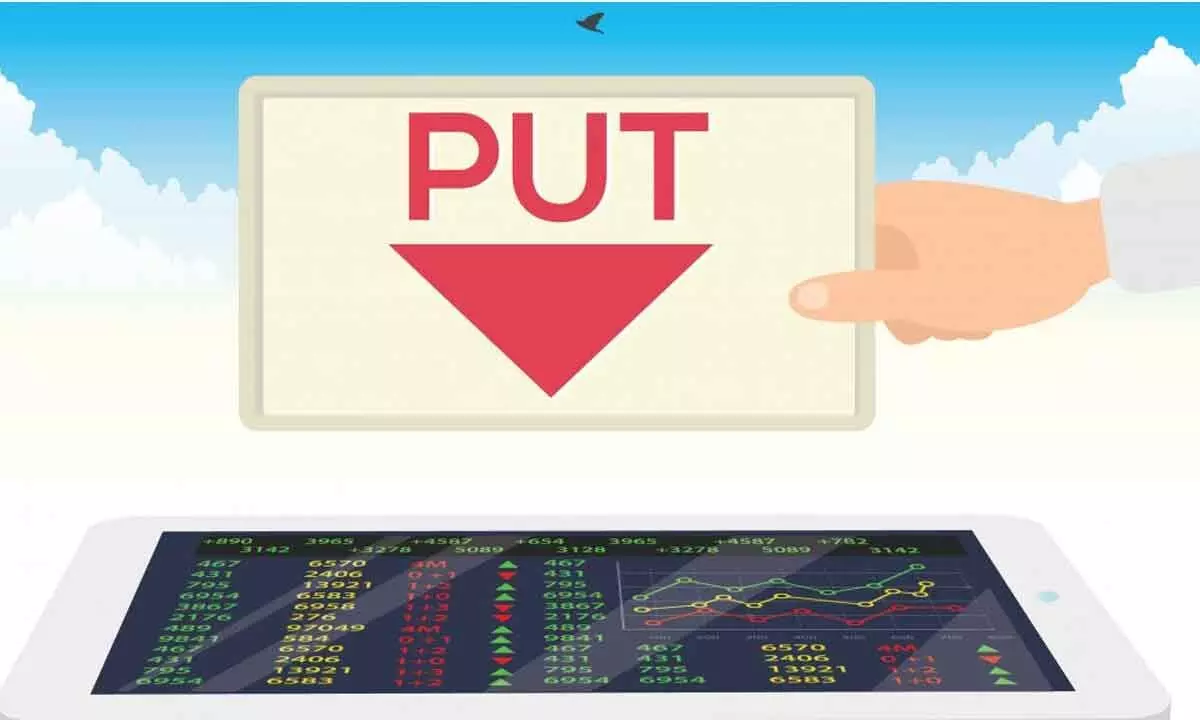Understanding how to buy a Put Option
The put option buyer is betting on the fact that the stock price will go down by the time expiry approaches. In order to profit from this view, he enters into a Put Option agreement
image for illustrative purpose

Now that we are familiar with the Call option from the buyers and sellers’ perspective, understanding Put option especially from a buyer’s point of view is very easy. When you have a bearish view on the market you buy a put option.
The put option buyer is betting on the fact that the stock price will go down by the time expiry approaches. In order to profit from this view, he enters into a Put Option agreement. In a put option agreement, the buyer of the put option can buy the right to sell a stock at a price (strike price) irrespective of where the underlying/stock is trading at.
If the Put option buyer expects the market to go down by expiry, then the put option seller expects the market (or the stock) to go up or stay flat.
At the time of agreement, the put option seller is selling a right to the put option buyer wherein the buyer can ‘sell’ the underlying to the ‘put option seller’ at the time of expiry.
• The buyer of the put option is bearish about the underlying asset, while the seller of the put option is neutral or bullish on the same underlying.
• The buyer of the put option has the right to sell the underlying asset upon expiry at the strike price.
• The seller of the put option is obligated (since he receives an upfront premium) to buy the underlying asset at the strike price from the put option buyer if the buyer wishes to exercise his right.
• The breakeven point for the put option buyer is calculated as Strike price – Premium Paid
Intrinsic Value for (Put Option) = Strike Price – Spot Price
At the breakeven point the put option buyer neither makes money nor loses money. It is only above this point, the put option buyer would start to make money.
The Put option buyer experiences a loss only when the spot price goes above the strike price However, this loss is limited to the extent of the premium paid.
The Put Option buyer will experience an exponential gain as and when the spot price trades below the strike price. The gains can be potentially unlimited.
Still confusing? Let’s understand with an example.
On May 4, Nifty closed at 18256. Suppose my view is bearish and on May 2, I bought 18400 strike price which opened at 276.
Profit and Loss
Strike -Spot - premium paid
18400-18257-276
143-276
-133*50 is the loss (50 is lot size of Nifty)
I had a view that the Nifty will close below 18400 and yes, the Nifty closed below 18400 but I was still at a loss because of the wrong strike price and the price at which I bought. I should take the premium paid into consideration.
Breakeven
Strike price - Premium paid
18400-276=18124
On the May 2, I bought at 276 and on May 4, I sold at 146. Loss is 130* 50.
I would be in profit if Nifty closed below 18124.
Nevertheless, to be in profit, strike price selection is important even if our view is right.
(The author is a homemaker, who dabbles in stock market investments in free time)

